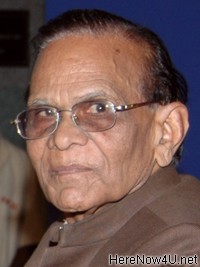There are two viewpoints mentioned in Jain literature, the abstract (Nishchaya Naya) and practical (Vyavhar naya) as complementary to each other and not contradictory. As one advances in knowledge and conduct from lower stages to the higher and higher stages he gains more and more knowledge (understanding) and firmness in character by gradual practical steps (Vyavhar Naya). It is only at the highest stage of Arhats that perfection is attained and nothing remains to be done or practised. Arhats and eventually siddhas are in abstract stage (Nishchaya Naya) in the highest and the purest form of soul. The array of rational practical steps or stages (in belief, knowledge and conduct) culminate in abstract, the highest one. The nomenclature of abstract viewpoint as Nishchaya Naya is later development, originally it was pure view point (Shudh Naya).
॥ ववहारो भूत्थो देसिदो सुद्धरणओ ॥11॥
(Samaysar by Acharya Kundkunda)
[ Vyavhar naya is not important; Sudha naya is relevant ]
Such a statement discarding practical viewpoint by Acharya Kundkund is perplexing because in earlier stanza of Samyasar he has himself stated the importance of practical viewpoint (Vyavhar Naya).
॥ ववहारेण बिना परमत्थुवएसणमसक्कं ॥8॥
[It is not possible to preach path of salvation without Vyavhar Naya]
Just in the next stanza No.12 after 11th he forbids preaching by abstract viewpoints to individuals advancing on rational path for salvation till they attain complete knowledge and perfect conduct. Arhat stage is only such a stage and for whom only there is relevance for abstract viewpoint (Shudh Naya).
॥ सुद्धो सुद्धादिसो पायव्वो परमभावदरस्सीहि।
ववहारो दे सिदा पुण्जे दु अपर में द्विदाभावे ॥12॥
There appears to be significant impact of Brahmanical cults, which was on the rise, suppressing others by various temptations and even force. Brahma (the pure and real) and Maya (the mirage and unreal) were main facets.. " ब्रहम सत्य जगन्मिथ्या " Kundkund tried to synthesise the pure abstract (shudh) and the practical (Vyavhar). He gave supremacy to shudh and simultaneously cautioned the followers for it till they attain perfection denouncing Vyavhar and by glorifying Shudh he must have satisfied the then powerful brahminical cult and simultaneously emphasing the importance of Vyavhar he has adhered to the principle of Anekant of Jainism.
The controversy has however been started recently by Songarh school and it is raging fiercely without any hope of reconciliation. They quote and swear by Kundkund but do not try to read his verses in correct perspective. The tragic set back and fall out of relevance of Shudh or Nishchaya naya is that from the fundamental trinity of belief, knowledge and conduct only first two are emphasised and the third conduct has been relegated and almost abondoned. It is conduct, which is manifest and gives real identity to a Jain. It is necessary to restore the rational concept of trinity, which is indivisible and a unified whole. Unfortunately in Samaysar by Kundkund Samayakdristi (endowed with rational belief only and not indivisible trinity of belief, knowledge and conduct) has been so much glorified that he is said to be not only immune from karmic influx but is getting rid of karmic matter even while enjoying sensuous pleasures. It is height of moral laxity and against conduct rules. It is Solipsism and not Jainism.
 S.M. Jain
S.M. Jain
